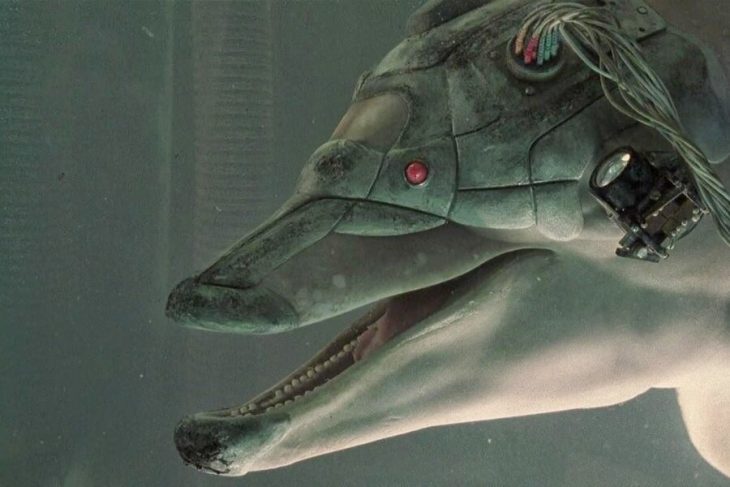
Word of the Day: Mnemonic
Today’s word of the day, courtesy of vocabulary.com, is mnemonic. “A mnemonic is a memory aid for something, often taking the form of a rhyme or an acronym. I before E except after C, is a mnemonic to help you remember how to spell words like ‘piece’ and ‘receive.’
As an adjective, mnemonic describes something related to memory. “Spring forward, Fall back” is a mnemonic device to help you remember which way to set your clocks for daylight savings time. Set the clock forward an hour in the spring when daylight savings time begins, and set the clock back an hour in the fall when it ends. Well-known mnemonics exist to help you remember things like the planets, the digits of Pi, and the color spectrum.”
It first appeared in the language in “1753, ‘aiding the memory, intended to assist the memory;’ 1825, ‘pertaining to the memory,’ a back-formation from mnemonics, or from a Latinized form of Greek mnēmonikos ‘of or pertaining to memory,’ from mnēmōn (genitive mnēmonos) ‘remembering, mindful,’ from mnēmē ‘memory, a remembrance, record, an epitaph; memory as a mental faculty,’ from base of mnasthai ‘remember,’ from PIE root *men- (1) ‘to think.’ The noun meaning ‘mnemonic device’ is from 1858” (https://www.etymonline.com/search?q=mnemonic). Etymonline adds an entry for mnemonics: “’art of developing or improving memory,’ 1721.”
The pronunciation is probably easier than it looks: /nɪˈmɒn ɪks/ (IPA) or [ ni-mon-iks ] phonetic respelling (https://www.dictionary.com/browse/mnemonics). So you can pretty much ignore that “m” that starts the word.
What is a backformation, you might be wondering. Backformation is a way of creating new words by removing an affix (a prefix or a suffix, in English, though some languages have infixes) from an existing word, like removing the –or from editor to create the verb edit. And the only way to tell whether the shortened word or the word with the affix came first is through examining historical documents. So in this case, mnemonics appeared in the language before mnemonic. I might also mention that mnemonic as a noun is really what we would call a substantive adjective, or just a substantive. What that means is that it’s an adjective with an absent noun, as when Jesus says, “For ye have the poor always with you” (Matthew 26:11, KJV) where “the poor” really means “the poor people.”
There is actually a story with the word mnemonic in the title. It’s called “Johnny Mnemonic,” and it was written by William Gibson and published in Omni in 1981. Here is an Amazon.com review of the story: “Johnny Mnemonic takes readers into William Gibson’s dark, slick cities of the future. Johnny is a 21st-Century smuggler. Data is his contraband. And he’s got plenty of it. In fact, he has way too much. Caught in a situation he could not easily get out of, Johnny over-loads the computer-chip in his head. The data is white-hot and he has twenty-four hours to down-load or else he’s fried. As he rushes to his destination, he realizes that an army of Yakuza killers is on his trail; they want the data he possesses–and they are willing to take his head to get it. In a non-stop, action-packed race against the time-bomb in his brain, Johnny’s only allies are a cybernetic dolphin and a gorgeous girl streetfighter with a hardwired taste for violence.”
Gibson was a pioneer in a subgenre of science fiction called cyberpunk. The style combines high tech features, like the embedded hard drive in Johnny’s head, with a film noir darkness; the stories generally take place in urban environments sometime in the near future. Gibson’s biggest success came with his Sprawl trilogy: Neuromancer (1984), Count Zero (1986), and Mona Lisa Overdrive (1988). With Bruce Sterling, he wrote The Difference Engine, which marks the ascension of the steam punk subgenre, a subgenre that is still popular, though cyberpunk has pretty much disappeared. But he coined the word cyberspace in the process.
“Johnny Mnemonic” was turned into a movie starring Keanu Reeves in 1995, with a screenplay by William Gibson. In the USA and Canada, the movie grossed less than $20 million against a $26 million budget, but it did well overseas, particularly in Japan, where it was released before its release in the US.
But as films go, I do have to say that Johnny Mnemonic was memorable. Then again, the futuristic setting was 2021, and neither the story nor the film included COVID-19.
The image today is a still from the movie Johnny Mnemonic, of the cybernetically enhanced dolphin named Jones, credited to TriStar.